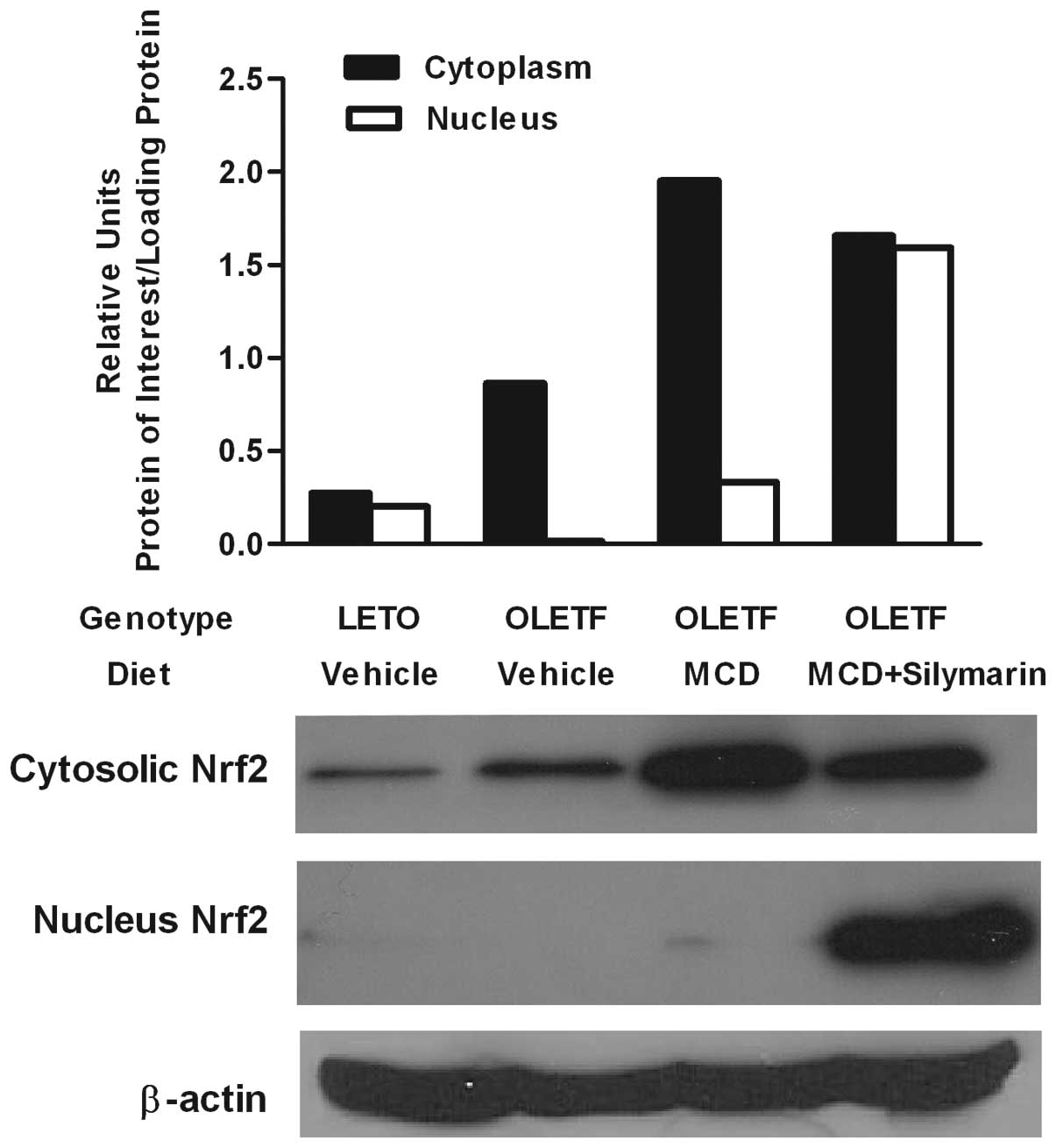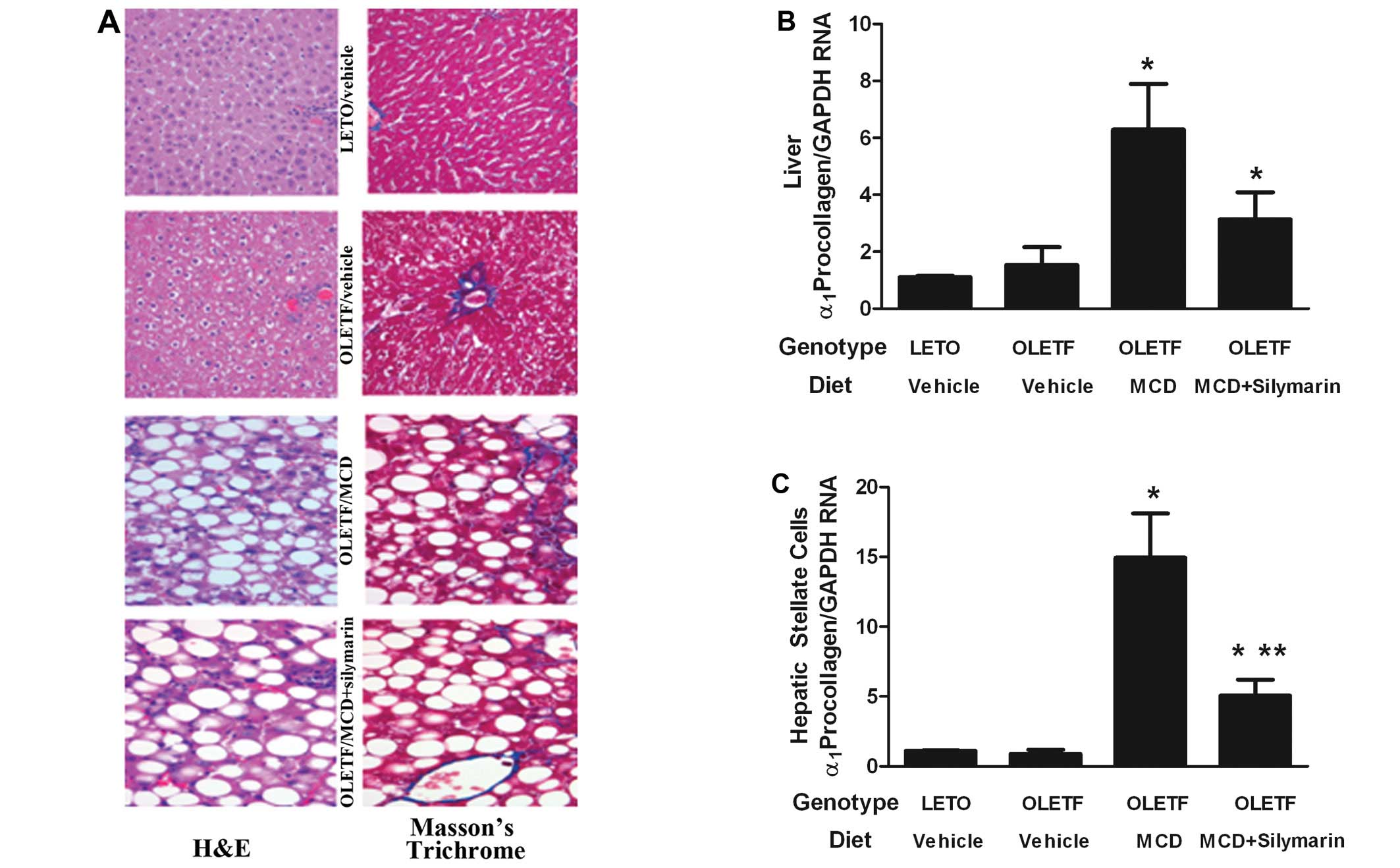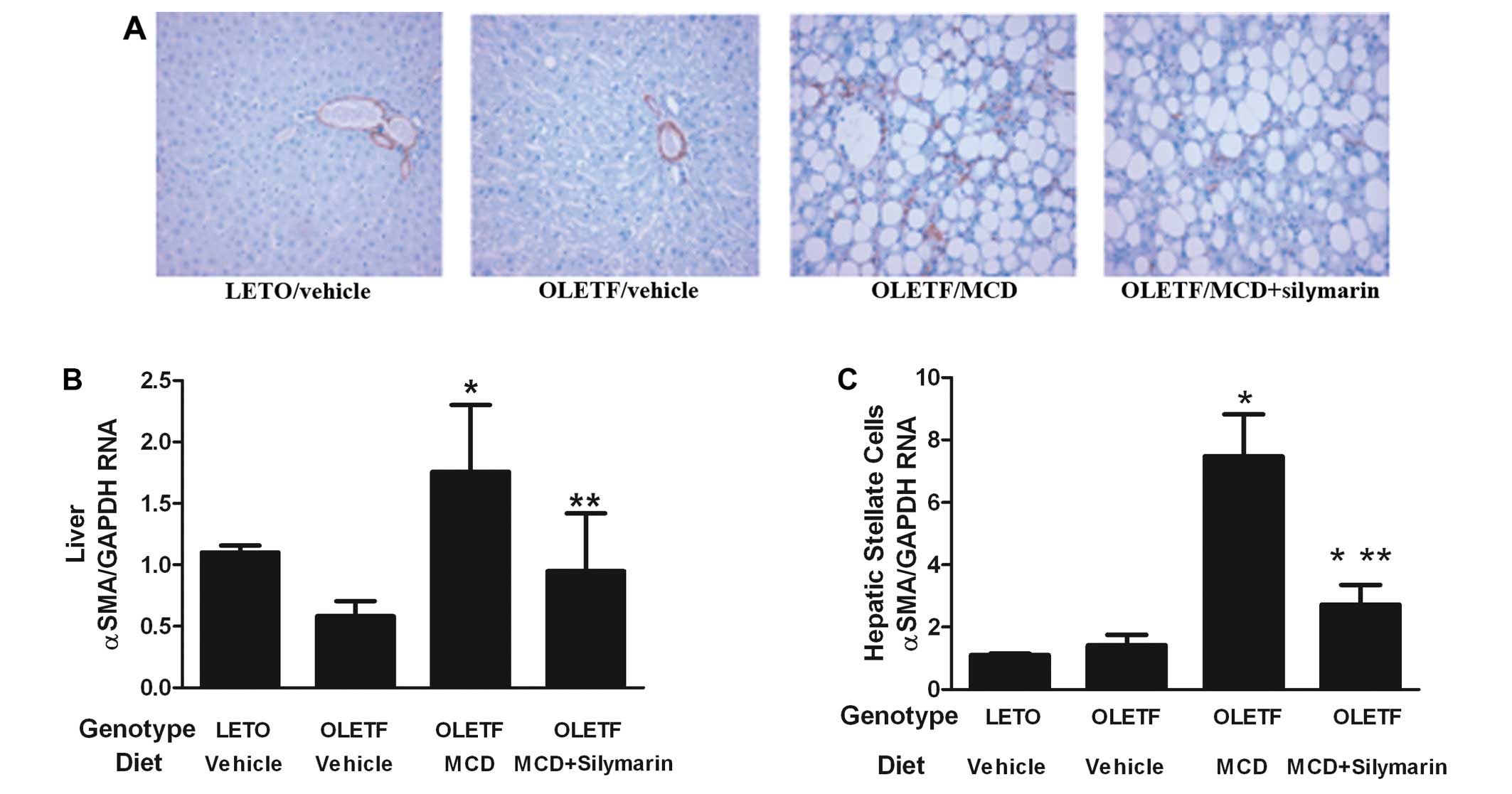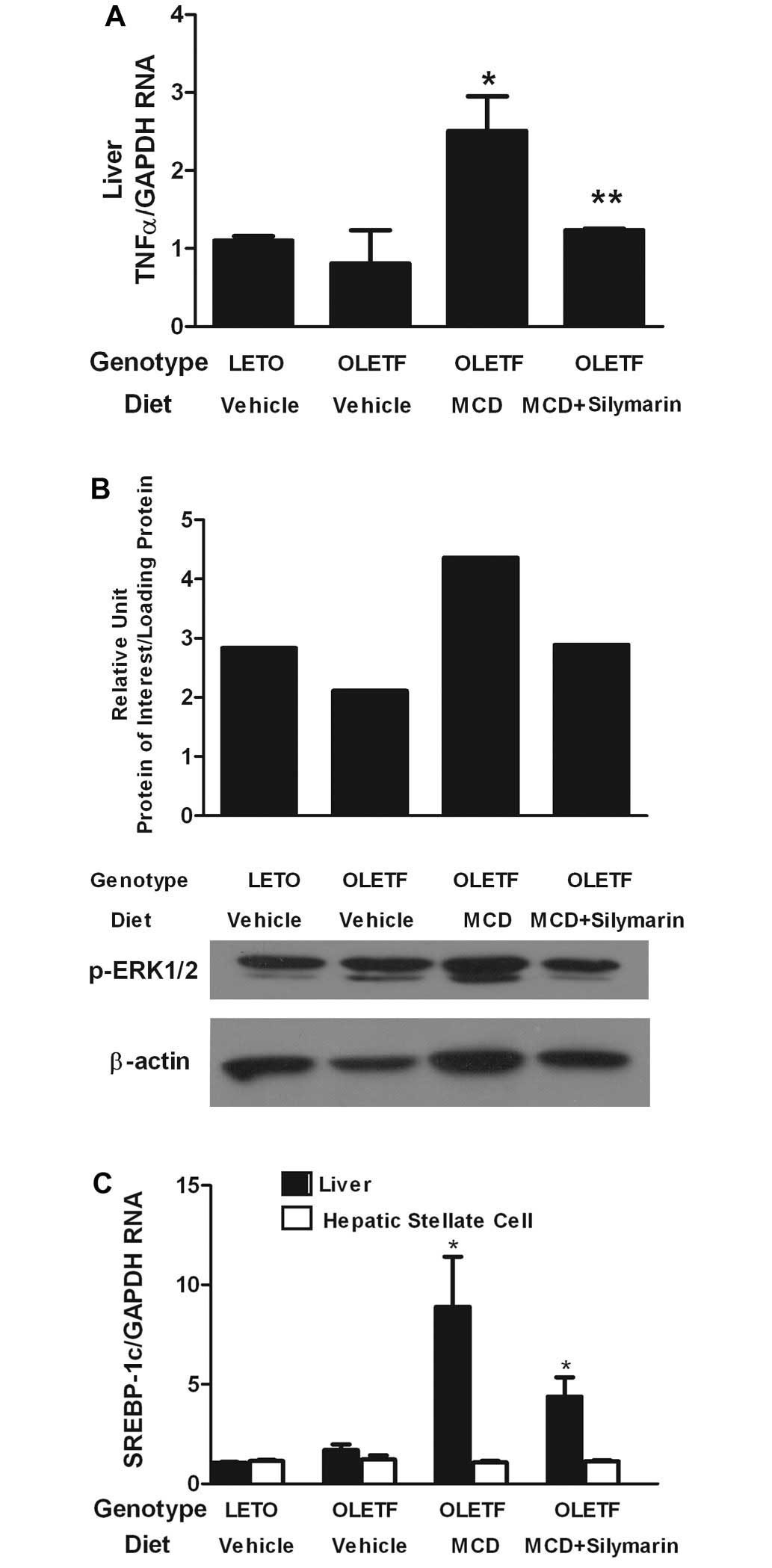|
1.
|
SG HubscherHistologic assessment of
non-alcoholic fatty liver
diseaseHistopathology49450465200610.1111/j.1365-2559.2006.02416.x17064291
|
|
2.
|
SA HarrisonS TorgersonPH HayashiThe
natural history of nonalcoholic fatty liver disease: a clinical
histopathological studyAm J
Gastroenterol9820422047200310.1111/j.1572-0241.2003.07659.x14499785
|
|
3.
|
F FassioE AlvarezN DominguezG LandeiraC
LongoNatural history of nonalcoholic steatohepatitis: a
longitudinal study of repeat liver
biopsiesHepatology40820826200415382171
|
|
4.
|
LA AdamsS SandersonKD LindorP AnguloThe
histological course of nonalcoholic fatty liver disease: a
longitudinal study of 103 patients with sequential liver biopsiesJ
Hepatol42132138200510.1016/j.jhep.2004.09.012
|
|
5.
|
P MarceauS BironFS HouldLiver pathology
and the metabolic syndrome X in severe obesityJ Clin Endocrinol
Metab8415131517199910.1210/jcem.84.5.566110323371
|
|
6.
|
G MarchesiniM BriziG BianchiNonalcoholic
fatty liver disease: a feature of the metabolic
syndromeDiabetes5018441850200110.2337/diabetes.50.8.184411473047
|
|
7.
|
G MarchesiniE BugianesiG
ForlaniNonalcoholic fatty liver, steatohepatitis, and the metabolic
syndromeHepatology37917923200310.1053/jhep.2003.5016112668987
|
|
8.
|
T OtaT TakamuraS KuritaInsulin resistance
accelerates a dietary rat model of nonalcoholic
steatohepatitisGastroenterology132282293200710.1053/j.gastro.2006.10.01417241878
|
|
9.
|
M UnoS KuritaH MisoTranilast, an
antifibrogenic agent, ameliorates a dietary rat model of
nonalcoholic
steatohepatitisHepatology48109118200810.1002/hep.2233818571789
|
|
10.
|
R CamposA GarridoR GuerraA
ValenzuelaSilybin dihemisuccinate protects against glutathione
depletion and lipid peroxidation induced by acetaminophen on rat
liverPlanta Med55417419198910.1055/s-2006-9620552813577
|
|
11.
|
IA LeclercqGC FarrellC SempouxA dela PenaY
HorsmansCurcumin inhibits NF-kappaB activation and reduces the
severity of experimental steatohepatitis in miceJ
Hepatol41926934200410.1016/j.jhep.2004.08.01015582125
|
|
12.
|
AB HalimO el-AhmadyS Hassab-AllahF
Abdel-GalilY HafezA DarwishBiochemical effect of antioxidants on
lipids and liver function in experimentally-induced liver damageAnn
Clin Biochem34656663199710.1177/0004563297034006109367004
|
|
13.
|
P LetteronG LabbeC DegottMechanism for the
protective effects of silymarin against carbon
tetrachloride-induced lipid peroxidation and hepatotoxicity in
mice. Evidence that silymarin acts both as an inhibitor of
metabolic activation and as a chain-breaking antioxidantBiochem
Pharmacol3920272034199010.1016/0006-2952(90)90625-U
|
|
14.
|
Z SongM SongDY LeeY LiuIV DeaciucCJ
McClainSilymarin prevents palmitate-induced lipotoxicity in HepG2
cells: involvement of maintenance of Akt kinase activationBasic
Clin Pharmacol
Toxicol101262268200710.1111/j.1742-7843.2007.00116.x17845508
|
|
15.
|
M MourelleP MurielL FavariT
FrancoPrevention of CCl4-induced liver cirrhosis by silymarinFundam
Clin
Pharmacol3183191198910.1111/j.1472-8206.1989.tb00449.x2548940
|
|
16.
|
JH TsaiJY LiuTT WuEffects of silymarin on
the resolution of liver fibrosis induced by carbon tetrachloride in
ratsJ Viral
Hepat15508514200810.1111/j.1365-2893.2008.00971.x18397225
|
|
17.
|
K KawanoT HirashimaS MoriY SaitohM
KurosumiT NatoriSpontaneous long-term hyperglycemic rat with
diabetic complications. Otsuka Long-Evans Tokushima Fatty (OLETF)
strainDiabetes4114421428199210.2337/diab.41.11.14221397718
|
|
18.
|
A Dela PeñaIA LeclercqJ FieldJ GeorgeB
JonesG FarrellNF-κB activation, rather than TNF, mediates hepatic
inflammation in a murine dietary model of
steatohepatitisGastroenterology129166316742005
|
|
19.
|
EM BruntNonalcoholic steatohepatitis:
definition and pathologySemin Liver
Dis2136200110.1055/s-2001-1292511296695
|
|
20.
|
R KirschV ClarksonEG WhephardRodent
nutritional model of non-alcoholic steatohepatitis: species, strain
and sex differences studiesJ Gastroenterol
Hepatol1812721282200310.1046/j.1440-1746.2003.03198.x
|
|
21.
|
DE KleinerEM BruntM Van NattaDesign and
validation of a histological scoring system of nonalcoholic fatty
liver diseaseHepatology4113131321200510.1002/hep.2070115915461
|
|
22.
|
Y YamazakiS KakizakiN HoriguchiThe role of
the nuclear receptor constitutive androstane receptor in the
pathogenesis of non-alcoholic
steatohepatitisGut56565574200710.1136/gut.2006.09326016950832
|
|
23.
|
JI LeeKS LeeYH PaikApoptosis of hepatic
stellate cells in carbon tetrachloride induced acute liver injury
of the rat: analysis of isolated hepatic stellate cellsJ
Hepatol39960966200310.1016/S0168-8278(03)00411-214642612
|
|
24.
|
G Svegliati-BaroniL D’AmbrosioG
FerrettiFibrogenic effect of oxidative stress on rat hepatic
stellate
cellsHepatology27720726199810.1002/hep.5102703139500700
|
|
25.
|
N NietoJA Dominguez-RosalesL FontanaRat
hepatic stellate cells contribute to the acute-phase response with
increased expression of alpha1(I) and alpha1(IV) collagens, tissue
inhibitor of metalloproteinase-1 and matrix metalloproteinase-2
messenger RNAsHepatology33597607200110.1053/jhep.2001.22520
|
|
26.
|
RF SchwabeB SchnablYO KweonDA BrennerCD40
activates NF-kappa B and c-Jun N-terminal kinase and enhances
chemokine secretion on activated human hepatic stellate cellsJ
Immunol16668126819200110.4049/jimmunol.166.11.681211359840
|
|
27.
|
KJ LivakTD SchmittgenAnalysis of relative
gene expression data using real-time quantitative PCR and the
2(−Delta Delta C(T)) methodMethods254024082001
|
|
28.
|
IA LeclercqGC FarrellJ FieldDR BellFJ
GonzalezGR RobertsonCYP2E1 and CYP4A as microsomal catalysts of
lipid peroxides in murine nonalcoholic steatohepatitisJ Clin
Invest10510671075200010.1172/JCI881410772651
|
|
29.
|
E IpGC FarrellG RobersonP HallR KirschI
LeclercqCentral role of PPARalpha-dependent hepatic lipid turnover
in dietary steatohepatitis in
miceHepatology38123132200310.1053/jhep.2003.5030712829994
|
|
30.
|
H LigeretA BraultD VallerandY HaddadPS
HaddadAntioxidant and mitochondrial protective effect of silibinin
in cold preservation-warm reperfusion liver injuryJ
Ethnopharmacol115507514200810.1016/j.jep.2007.10.02418061382
|
|
31.
|
MC LinSH KaoPJ ChungKC ChanMY YangCJ
WangImprovement for high fat diet-induced hepatic injuries and
oxidative stress by flavonoid-enriched extract from Nelumbo
nucifera leafJ Agric Food
Chem5759255932200910.1021/jf901058a19499892
|
|
32.
|
M HaqueAJ SanyalThe metabolic
abnormalities associated with non-alcoholic fatty liver diseaseBest
Pract Res Clin
Gastroenterol16709731200210.1053/bega.2002.032512406441
|
|
33.
|
AJ SanyalC Campbell-SargentF
MirshahiNonalcoholic steatohepatitis: association of insulin
resistance and mitochondrial
abnormalitiesGastroenterology12011831192200110.1053/gast.2001.2325611266382
|
|
34.
|
S ZhanDC RockeyTumor necrosis factor α
stimulates endothelin-1 synthesis in rat hepatic stellate cells in
hepatic wound healing through a novel IKK/JKN pathwayExp Cell
Res317104010482011
|
|
35.
|
P GongAI CederbaumNrf2 increased by CYP2E1
in rodent liver and HepG2 cells and protects against oxidative
stress caused by
CYP2E1Hepatology43144153200610.1002/hep.2100416374848
|
|
36.
|
T NguyenPJ SherrattCB PickettRegulatory
mechanisms controlling gene expression medicated by the antioxidant
response elementAnnu Rev Pharmacol
Toxicol43233260200310.1146/annurev.pharmtox.43.100901.14022912359864
|


















